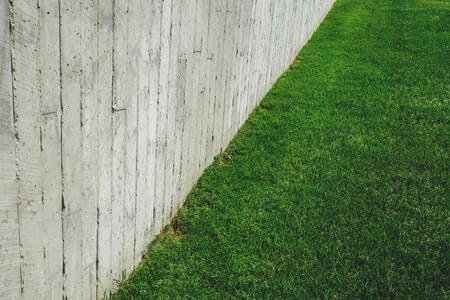A garden fence is a good way to keep your children and pets safe while allowing you to enjoy the outdoors. However, if you’re not careful about how high it is, it can also be an annoyance to people walking by or neighbours who live nearby.
Most communities have restrictions on how high fences can be in order to preserve views and maintain safe sightlines throughout the neighbourhood.
If you live in an area where homes are close together or if there is a school nearby, these restrictions may apply.
Fences that exceed 6 feet in height require permits from some municipalities, while others do not allow them at all.
What is the maximum height of a fence without planning permission?
A fence is an important part of the garden and it can provide privacy, security and protection. When planning a new fence, many people wonder how high they can go without needing permission from their local council or planning authority.
When you want to build a new fence, you might be wondering how high it can be before needing planning permission.
The answer is that there are no hard and fast rules on this – if your neighbour agrees with the height of the fence then they don’t need to get council approval.
However, if they disagree then it becomes tricky because councils will usually side with them in regards to disputes like this. If you want to avoid any trouble at all, make sure your new fence is less than 2 metres (6 feet) tall or ask for permission first.
Can I put a trellis on top of a 6 foot fence?
If you want to add some privacy to your garden, then adding a trellis is a great option. But can you put one on top of a 6 foot fence? Yes! as most people do not consider a trellis to be part of a fence obscuring vision.
Here are the basic steps:
- Measure how far out from the side of the house or building that your fence will be. This should be done by measuring from the front edge of your property line, not where it meets with other buildings, driveways or sidewalks.
- Mark this measurement down as well as where you would like to place your trellis – at least 4 feet away from any other structures for safety reasons.
- With these measurements to hand, head over to your closest hardware store and find an appropriate size trellis for your fence.
- You will need someone assisting you to hold it in place when you attach it to your existing fence.
Can I put up an 8 foot fence UK?
If you’re wondering if you can put up an 8 foot fence in the UK, the answer is yes. But there are a few considerations to take into account before doing so.

Property owners with back gardens have to abide by some strict limitations when it comes to fence height. You can’t go higher than 2 metres in your rear garden. Restrictions say that any construction alongside property lines should not exceed 1 metre or 3 feet high.
The general rule-of thumb is that fences should be no more than two metres off ground level (or roughly six feet).
Any one after a much taller fence will need to think hard before making any final decisions. This is mainly because most local council regulations restrict how much elevation is allowed between potential neighbours.
How to block out Neighbours view?
The best way to block the view of your neighbours is by planting trees or shrubs. You can also use a trellis, pergola, or fence on your side of the property line.
If you are not able to do this for some reason then you will need to talk with them first and see if there is any other solution that can be reached on both sides.
It’s important to know that if there is a leasehold on their property (meaning they own it but someone else has rights) then you will not be able to plant anything without the leaseholders permission.
As a last resort, you could apply for council permission to build a taller fence but could make things worse between neighbours.
What is the fastest growing plant for privacy?
Privacy is a concern for many homeowners, and with good reason. The feeling of being watched by neighbours across the street or from the upstairs window can be uncomfortable, if not downright creepy.
Fortunately, there are ways to provide an ample level of privacy in your rear garden space at a reasonable cost.
The fastest growing plant for privacy is bamboo. It’s perfect for planting in tight spaces because it grows very quickly and can be trimmed to different heights – all depending on what you need your privacy barrier to be.
Bamboo is also a good option if you’re looking for something that requires little maintenance since it thrives in well-drained soil, doesn’t require much water once established, and has no major diseases or pest problems.
Another solution that is quickly gaining popularity among home owners is planting hedges as their primary form of landscaping. It, however, does not grow as quick as bamboo and often requires more maintenance to keep it in check.






